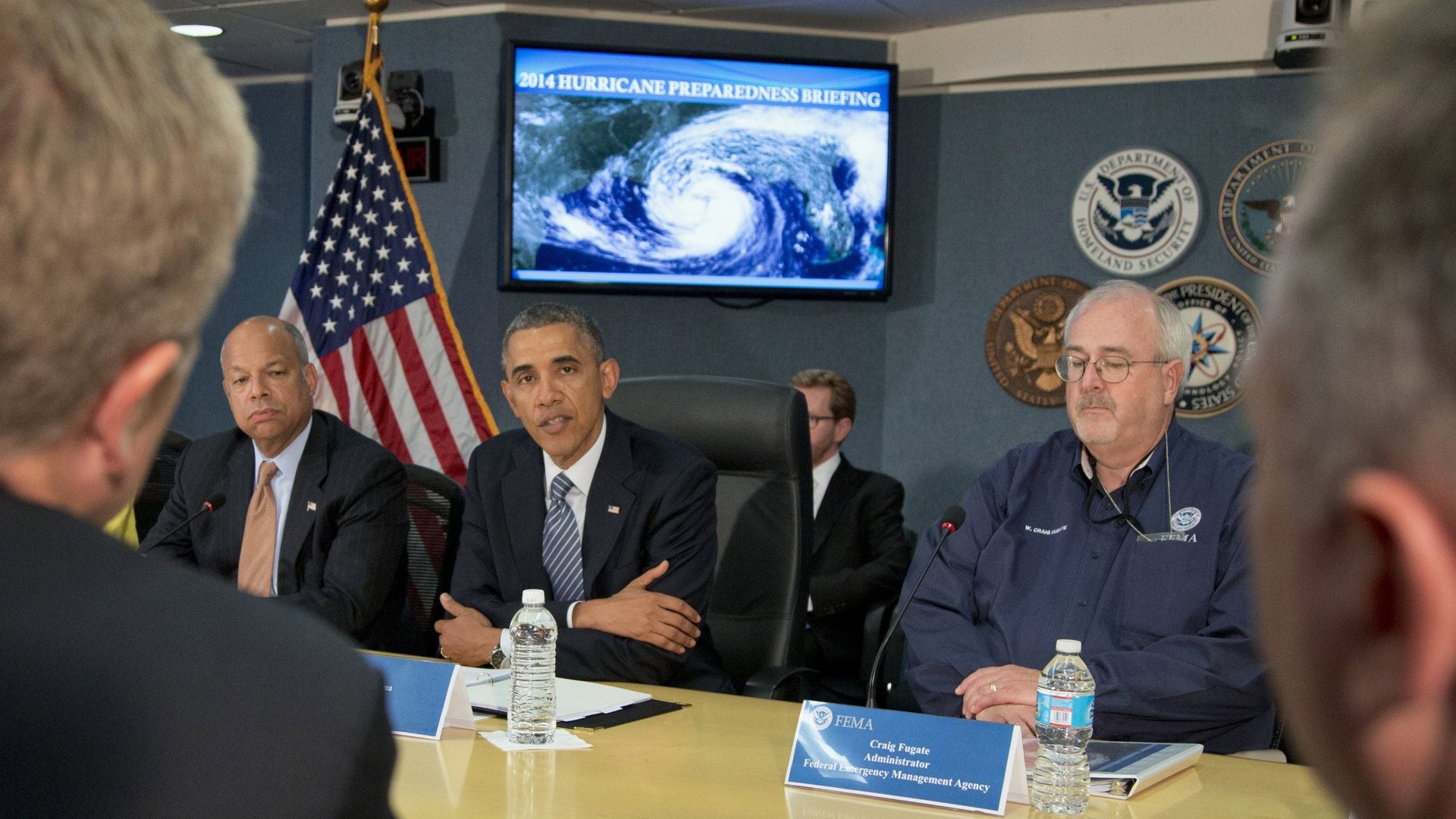Hidden sexism may make you more likely to die in a hurricane
The Atlantic hurricane season officially began yesterday, and the storms, as they do every year, will alternate between male and female names, drawn from lists created by the National Weather Service. This season, look out for Hurricanes Cristobal, Edouard, and Teddy—and especially Hurricanes Dolly, Bertha, and Fay.


The Atlantic hurricane season officially began yesterday, and the storms, as they do every year, will alternate between male and female names, drawn from lists created by the National Weather Service. This season, look out for Hurricanes Cristobal, Edouard, and Teddy—and especially Hurricanes Dolly, Bertha, and Fay.
That’s because a new study (paywall) by researchers at the University of Illinois found that severe hurricanes with female names are significantly more deadly than those with male names. That’s even excluding Hurricanes Katrina and Audrey—two unusually destructive storms—as outliers.
It turns out that the basic issue is probably gender bias.
“In judging the intensity of a storm, people appear to be applying their beliefs about how men and women behave,” said Sharon Shavitt, one of the report’s co-authors. “This makes a female-named hurricane, especially one with a very feminine name such as Belle or Cindy, seem gentler and less violent.”
Because people are less likely to believe that a female-named hurricane will be dangerous, they’re also less likely to evacuate. And the more people sticking around during flooding and storm surges, the greater the potential deaths. The study authors estimate that “changing a severe hurricane’s name from the masculine ‘Charley’ to the feminine ‘Eloise’ could nearly triple its death toll.”
The research, which is being published today in the peer-reviewed Proceedings of the National Academy of Sciences, looked at data on 94 hurricanes that made landfall in the US from 1950 to 2012. By rating each hurricane name on a scale of how gendered it was—the most masculine names received 1; girliest names scored an 11—the authors created what they called a “masculine-feminine index.” (Hurricane Judd would likely be rated close to a 1, while Hurricane Anastasia would come in around 11. A more androgynously named Hurricane Sam would presumably fall somewhere in the middle.)
The storms with the highest loss of life also happened to score closer to 11 on the MFI. Follow-up experiments confirmed a correlation between gender and perceived risk. In one such study, participants were asked to rate the destructiveness of a hypothetical storm given a male or female name. They consistently found Hurricane Victor much more menacing than Hurricane Victoria.
But the issue might not be quite so cut and dry; others who have looked at the same data have drawn markedly different conclusions. For instance, in 2000 the Florida Sun-Sentinel compared hurricane names from 1979 to 2000 along a rigid gender binary (male or female, as opposed to the new study’s spectrum of masculinity and femininity) and found that storms with male names caused greater destruction. That analysis also took into account hurricane destruction outside the continental US, which the new study does not.
And today, Jeff Lazo from the National Centre for Atmospheric Research questioned the new study’s methodology, including the way it split the data into two sets—pre- and post-1979, the year that hurricane naming convention (pdf) began using male names as well as female ones—and the representativeness of its experiments’ sample populations.
The convention used up until 1979 gave hurricanes exclusively female names. Before that system, which began in 1953, storms were distinguished in a variety of ways, from latitude and longitude coordinates to saint’s names.